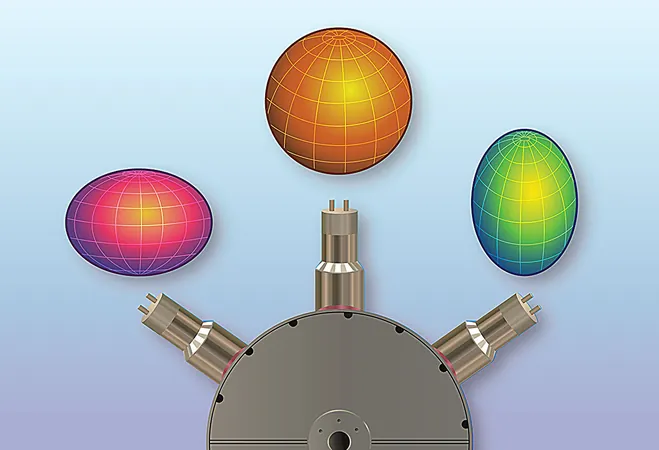
NASA's Groundbreaking Mission: Dragonfly Drone Set to Soar Over Titan, Saturn's Enigmatic Moon!
2025-04-29
Author: Rajesh
Get ready for an adventure unlike any other! About 800 million miles from Earth lies Titan, Saturn's largest moon, shrouded in clouds and darkness. Here, in a place where temperatures plummet to a chilling -290°F (-180°C) and sunlight barely reaches at 1% of its strength, scientists believe the building blocks of life might have once traversed its surface.
NASA just greenlit an astonishing mission to explore this mysterious world with a revolutionary drone named Dragonfly. This robotic rotorcraft, about the size of a car and powered by nuclear energy, has officially passed its critical design review, enabling the construction phase to commence. With a launch scheduled for July 2028 aboard a SpaceX Falcon Heavy rocket, Dragonfly aims to scout Titan's diverse geological terrains.
Exploration Goals and Exciting Challenges!
By 2034, Dragonfly will attempt to achieve the first controlled flight in a moon’s atmosphere, analyzing prebiotic chemistry and determining if Titan could host life. Despite COVID-19 delays and budget overruns pushing the project three years behind schedule, creative adjustments to the flight path and a powerful launch vehicle promise a swift journey.
A World of Intriguing Surprises!
Titan is not just a barren wasteland; it boasts a thick atmosphere — four times denser than our own — with clouds, winds, and even methane downpours! A unique terrestrial-like landscape features hydrocarbon dunes, rivers, lakes, and seas, all made not of water but of flowing methane.
What’s more, Titan’s surface processes might provide insights reminiscent of how Earth appeared over 3.8 billion years ago, just before life began to flourish.
Dragonfly: A Technical Marvel!
Conceived through a casual dinner discussion among scientists, Dragonfly was officially chosen for NASA’s New Frontiers program in June 2019. Originally projected to cost $850 million, the budget has since surged to $3.35 billion, triggering timeline adjustments and a change in launch dates. Now, with critical development stakes raised, Dragonfly is poised for a remarkable journey ahead.
What’s Inside the Craft?
Designed by the Applied Physics Laboratory, Dragonfly resembles a large drone with a dual quadcopter configuration. Its advanced features include a nuclear-powered generator and a suite of scientific instruments tailored for comprehensive geological analysis. This mission will utilize state-of-the-art technology to explore Titan’s surface like never before.
Landing Amongst Dunes!
Upon its arrival, Dragonfly will touch down near the Shangri-La region, characterized by its large dunes and warm organic landscapes. Drawing comparisons to Namibia’s landscapes, these features may hide valuable organic compounds and potentially liquid water.
During its three-year operational period, this ambitious drone will cover about 100 miles, exploring dozens of locations and shedding light on one of our solar system's most intriguing worlds. Buckle up — Dragonfly's epic journey into the unknown is about to begin!




 Brasil (PT)
Brasil (PT)
 Canada (EN)
Canada (EN)
 Chile (ES)
Chile (ES)
 Česko (CS)
Česko (CS)
 대한민국 (KO)
대한민국 (KO)
 España (ES)
España (ES)
 France (FR)
France (FR)
 Hong Kong (EN)
Hong Kong (EN)
 Italia (IT)
Italia (IT)
 日本 (JA)
日本 (JA)
 Magyarország (HU)
Magyarország (HU)
 Norge (NO)
Norge (NO)
 Polska (PL)
Polska (PL)
 Schweiz (DE)
Schweiz (DE)
 Singapore (EN)
Singapore (EN)
 Sverige (SV)
Sverige (SV)
 Suomi (FI)
Suomi (FI)
 Türkiye (TR)
Türkiye (TR)
 الإمارات العربية المتحدة (AR)
الإمارات العربية المتحدة (AR)